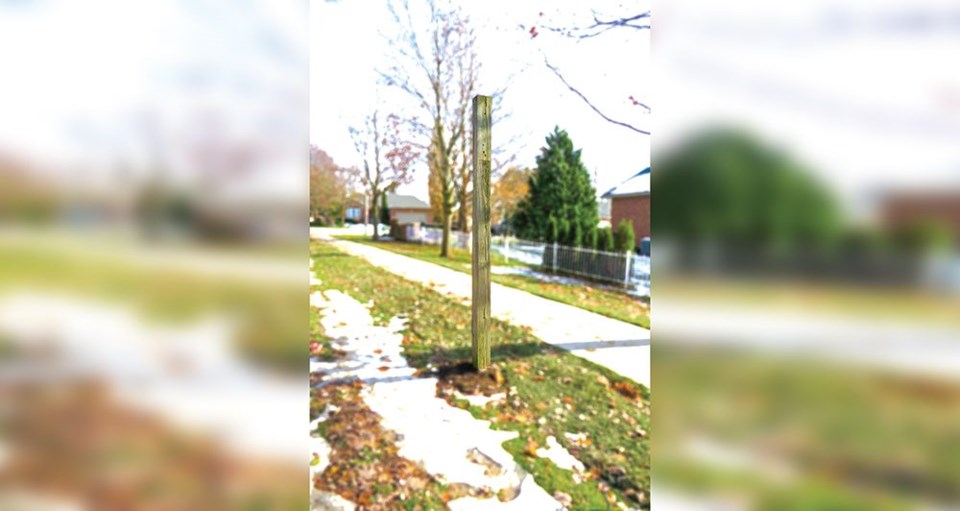A brief history of the Fonthill sign
BY BILL LAMB Special to the Voice
Many years ago, before the Region existed and when “Pelham” was still five distinct villages, a sign was erected along Canboro Road to indicate to the foreigners from Fenwick, and other places that made up the Township of Pelham, that they were entering the Village of Fonthill. The sign was a wooden board about three feet long, bolted to a ten-foot timber post, with the word “FONTHILL” proudly painted upon it. The fact that the boundary at this location ran along Canboro Road and the sign was on the Pelham Township side of the road was conveniently ignored by all.
So there the sign stood for all to see, while it watched over Canboro Road and Clifford Haist’s fruit farm to the south. In 1970, the Niagara Region came in existence and overnight the Township and villages became the Town of Pelham and the citizens were united. But a few things with their roots in the Village of Fonthill or before managed to survive, including the sign, Fonthill Hydro, Fonthill Post Office, etc., but that’s another story. Back to the sign, which noticed that Clifford’s Farm began to shrink, first to make room for Vinemount Drive, but that was a long way away, and it wasn’t too concerned.
However, one day (or night), 20, 25, 30 or more years ago, the sign was unbolted and taken away—but the post was left behind. Did the Town take the sign down and leave the post, or did persons unknown decide that the sign would look much better in their basement?
We may never know, but the naked post continued its vigil over the remains of Clifford’s Farm. It watched alone as the deep ravines in the fruit farm—where our children used to toboggan and ski in the winter, and work for Clifford in the summer— were filled-in to level the ground for the Oakridge development. It became dwarfed by newly planted trees, and finally the last of the farm disappeared as Clifford and Gertie’s house and their barns were demolished to make room for Canboro Hills.
The lonely post has remained throughout these years, quietly watching the “progress” going on around it. It did wonder if its last days had finally arrived as construction of a new sidewalk began within a few inches of it. The lower branches of its neighbouring trees were trimmed to ensure the safety of people using the sidewalk, the contractor’s heavy equipment and concrete trucks made sure they didn’t hit it, and the landscapers carefully fitted sod around it. It felt honoured by such treatment!
One wonders how many more years the post can stand alone between the sidewalk and the roadway, watching the traffic speed along Canboro Road and the joggers and the dog-walkers using the new sidewalk. Will some curious, inattentive driver, wondering what a bare post is doing so close to the road, finally bring its lonely days to an end? (The car wouldn’t escape unscathed either.) Or perhaps someone with vision in the Town will say, “Did you see this week’s paper? What’s that post doing there? Get rid of it.”
If you happen to know anyone who has a large, wooden, rather aged FONTHILL sign in their basement, or if you see one for sale at any of the various local curio dealers, make sure to check its provenance —it could be stolen property!



